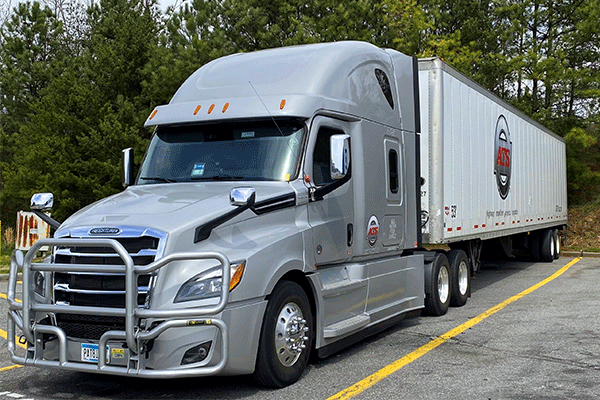 Supply chains can be complex. Some organizations have shipments coming and going at all hours and, often, this can make managing budgets and maintaining timelines difficult.
Supply chains can be complex. Some organizations have shipments coming and going at all hours and, often, this can make managing budgets and maintaining timelines difficult.
Streamlining and “greasing the wheels” of the freight transport process is key to a successful strategy that gets your shipment where it needs to be quickly and on-budget. You’re looking to do just that.
ATS has been a pillar of the U.S. trucking industry since 1955. During this time, we’ve seen this industry flourish into what it is today. This is in no small part, thanks to the ability of trucking companies to meet the adjusting needs of shippers and consignees.
Providing services such as “milk-runs” is one way that trucking enterprises have done just that.
In this blog, we’ll explain how incorporating “milk-runs” into your freight transportation model — wherever possible — can help you maintain your timelines and achieve your goals.
What Is a Milk-Run in Logistics?
The term “milk-run” was originally used to describe the process of picking up fresh milk at various farms along a central route. Due to the perishable nature of this milk, these runs took a high level of logistical oversight to make sure that they were done as smoothly and efficiently as possible.
Concerning freight shipping, a milk run can serve two — equally useful — purposes for businesses in many industries.
One way that this tactic can be used is for the congregation and shipment of inbound freight from multiple stakeholders/suppliers toward a central facility. When done correctly, a “milk-run” can cut down on the costs and long layover times associated with waiting for multiple smaller deliveries.
Since a single truck is dedicated to the movement of all inbound freight to a single location, these “milk-runs” can become highly efficient.
The second use-case for a “milk-run” is for intra-corporate inventory redistribution. This means that “milk-runs” provide a stable and reliable option for companies that need to move large amounts of inventory from one facility to multiple others, and vice versa.
By using a single truck — dedicated to completing a milk run — companies in many of the world’s largest industries can fulfill their internal supply chains. From one facility to another, “milk-runs” are a highly effective method for inventory roll-out and re-distribution.
When Should You Use a “Milk-Run” to Move Your Freight?
Now that you understand what a milk-run is and the two ways in which it can serve companies, let’s talk about who this service is best for.
The easiest way to do this is by providing short example scenarios for each use case. Below, we’ll explain:
- How “milk-runs” should be used for multi-corporate material collection.
- How “milk-runs” should be used for intra-corporate redistribution.
How a “Milk-Run” Should be Used for Multi-Corporate Material Collection
It’s early August and Johnny Applesauce Inc. — a producer of applesauce in the Spokane, Wash., area — is expecting their yearly influx of apples from suppliers littering their region.
To do this, Johnny Applesauce usually sends a multitude of smaller trucks to and from their suppliers regularly to collect apples as they’re plucked from the orchards. This year, however, Johnny Applesauce has decided to try a “milk run” when collecting these raw materials.
To do this, Johnny Applesauce uses a single, 53’ dry van trailer and sends it along a pre-planned route to collect apples from all of their external suppliers. Since they don’t have to wait for — and keep track of — multiple trucks, Johnny Applesauce can plan for this single inbound shipment.
In the end, using these milk runs help Johnny Applesauce as they plan out their shipping schedule. Allowing them to arrange a single shipment every two weeks instead of multiple every week. Additionally, Johnny Applesauce cuts down on the cost of finding and paying for multiple trucks and drivers in a tight trucking market.
How “Milk-Runs” Should be Used for Intra-Corporate Redistribution
It’s that time of year again and Speed Limit Motors is in the full swing of producing their newest commercial vehicle, the “SL 75” which is set to hit the roads in the summer of 2022.
Speed Limit Motors takes great pride in their manufacturing process and, as such, do most of this work in-house.
To do this properly, Speed Limit Motors has 6 different locations spanning the northeastern United States. Each of these locations is charged with producing a separate aspect of their cars. When the time comes for the production of the final product, a truck must be sent to each of these locations to collect their fabricated goods.
This year, due to a lack of available trucks, Speed Limit Motors has decided to use a “milk-run” to collect these pieces and bring them to the manufacturing facility. To do this, Speed Limit Motors works with their logistics provider to plan a route and schedule each pick-up.
As soon as their truck picks up product at one location, it’s on to the next where it receives another vital piece of their final commodity.
And Vice Versa . . .
If, for instance, a company doesn’t need to collect inventory from several facilities and bring them to a single location but instead needs to redistribute from multiple locations to multiple other locations, the term “milk-run” still applies.
A prime example of this is for a construction company that needs to re-distribute scaffolding throughout a state from many sights that no longer need it to many that do. In these cases, the company charged with collecting and re-distributing the scaffolding can do so using a “milk-run.”
In this case, the construction company would have a single truck pick up and drop-off different scaffolding products at multiple locations thereby “rolling out” this inventory to all locations that need it.
 How does a “Milk-Run” Impact Freight Shipping Price?
How does a “Milk-Run” Impact Freight Shipping Price?
When it comes to the price of these “milk-run” services, it all comes back to the supply of trucks in your area and the intensity of your demands. If you need to book a dedicated truck, driver and trailer for multiple days to complete a “milk-run,” this amount of time needed will increase your price.
As such, any delays in this process can end up forcing you to pay more for these services. For this reason, you should always make sure that you’re partnering with a seasoned provider that has a demonstrated history of offering “milk-run” services to customers across industries.
If you’re able to find the right partner, the advantages this service can provide in streamlining your supply chain and maximizing your budget are excellent.
Does a “Milk-Run” Fit Your Needs?
As you now know, “milk-runs” can take many forms and serve multiple purposes. Essentially though, any time that you need to pick up materials from — or redistribute inventory to — multiple locations, a “milk-run” is a capable solution.
Now that you understand what a “milk-run” is, it’s time to decide if this service will fit your supply chain as you strive to meet your goals.
To do this, you’ll need to find a partner capable of analyzing and facilitating the logistics of this process within your industry. Transparent communication between all parties is key to this process and you’ll want to have a provider in your corner who can help you navigate these waters.
If you’d like to discuss how ATS can help you inject the convenience of the “milk-runs” into your processes, reach out! We’d love to help you meet your goals.



